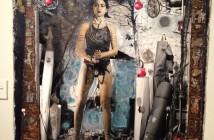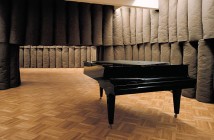
What does a tree look like? A child defines it like a lollipop, a green mass perched on top of a sturdy trunk. As we grow older we acknowledge the sinewy link between that trunk and its branches that support the leaves. Overwhelmed by the intricate detail of those connections, I find that when I draw a tree I often forget the leaves completely. They seem to be a superfluous externality, to be added on later in watercolor. But this detail-oriented technique leaves out the tree’s most tree-like qualities — the cool depth of its undercarriage. You cannot see the play of light against each leaf against each other. You cannot see past the emerald of the surface to the jade of its bowels.
Cézanne sees the tree as he sees everything else. As a series of planes of color, fitted together up against your eye. He gently outlines the pathways of the trunks in dotted lines, but you barely notice them. The subject of the study is that jade heart, which tucks itself up beneath glaring negative space. But the master painter’s casual strokes are angled to create space within the sparse color, and the bare canvas is framed to maybe become that emerald layer of sheen. This study discards that excess, and pares down to the character of those shadows beneath.
Paul Cézanne took the ideas of light and observation of the impressionists and tilted them towards modernism. He built his paintings on light and color, but drove them home with twisted planes that turned his landscapes into playgrounds for the careful eye. He was a major influence on artists as diverse as Picasso, Mondrian, and Jasper Johns. This study was completed near the end of his life and just before the art world tumbled into Cubism in 1907. You can see the beginnings of Picasso’s avant garde treatment of space and figure between these branches.
I see two trees, with branches entangled. There is a sandy road between, just suggested by the curve of umber in sunlight. This background does not separate itself from the vibrating planes of the tree shadows. They bounce back and forth off of one another, jumping up the trunk as a squirrel would. The blues perch on the tips of the branches, bits of sky held up by invisible twigs.
•••
Image Information:
Paul Cézanne, French (1839 — 1906), Study of Trees, 1904
Oil on canvas, 24 1/2 x 18 1/2″
Collection of the Harvard Art Museums/ Fogg Museum; Currently on View



